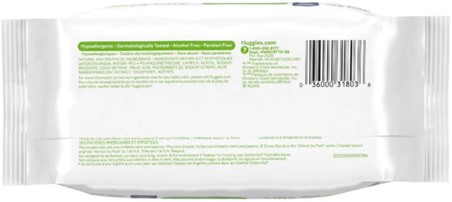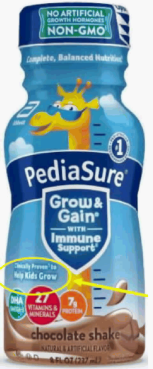Overjet, Inc. v. VideaHealth, Inc., 2024 WL 3480212, No.
24-cv-10446-ADB (D. Mass. Jul. 19, 2024)
The court denied Overjet’s request for a preliminary injunction
on copyright and false advertising claims, concluding that Overjet’s selection
of colors and shapes for annotating dental x-rays was unlikely to be protected
by copyright and that the literally false statements identified by Overjet had
been removed, thus preventing a finding of irreparable harm.
“Overjet uses AI to scan dental radiographic X-rays and
detect dental diseases. Specifically, Overjet uses an approach called
segmentation, which outlines exact borders and shows the extent to which
pathologies, or diseases, exist.” Its software “annotates diseases and
structures on dental X-rays,” which “allows clinicians to better detect
diseases and devise treatment plans.” It’s presently the only dental AI company
with FDA clearance for “performing dental detection and segmentation to outline
exactly where pathologies exist.”
In fall 2023, Overjet launched its “Anatomical Structures
Visualization Tool” for Overjet Caries Assist, which introduced the relevant
coloring scheme and design. The tool uses “white to represent enamel, purple to
denote the pulp of a tooth, bright green lines with circles at the ends to
indicate measurements of bone levels, and red and translucency to mark areas of
decay.” [Id. Overjet allegedly chose these colors and shapes in order to create
a “contrast with the gray scale” of the X-rays and with the ultimate goal of
assisting with “patient assessment, diagnosis, and treatment planning.” It also
allegedly “selected the design and colors to help with brand identification;
the purple, for example, complements Overjet’s purple brand color.” Example
image showing use of red, white, purple, and green lines ending in dots:

Videa is a competing dental AI company. In December 2023,
the FDA cleared “Videa Dental AI,” for “identifying and localizing a range of
dental findings and indications, including caries or cavities and periapical
radiolucency, when analyzing bitewing, periapical, and panoramic X-rays taken
from patients three years of age and older.” If the software detects any
indications, it “returns a set of bounding boxes representing the suspect
dental finding.” Unlike Overjet, VideaAI offers a Clinical View and Patient
View; the former “uses boxes and lines with dots to quickly display … points of
interest.” Patient View, at issue here, is designed to be a “communication tool
for [ ] provider[s].” and offers “a version of the results that are ‘segmented’
and highlights the shape of the points of interest” by “show[ing] more than
mere lines and boxes.”
Example; patient view with red areas, blue, white, and greenish lines with circles:
Videa beat Overjet out of a lucrative partnership with a
large dental client.
Copyright: Overjet’s copyright protected its source code,
but there were no allegations of code copying. Instead, it alleged copying of its
“coloring scheme, shades, and shape.” First, there were real questions about
whether actual copying occurred, given the timeline, which I won’t get into,
though those questions are related to the existence of protection for, e.g.,
selecting green as the color for healthy gum levels, yellow for some risk,
orange for higher risk, and red for a “potential problem.” Videa argued that it
chose this “stoplight” system because it was “intuitive for patients and clinicians.”
Likewise, it argued that red boxes to indicate tooth decay was an “obvious
color choice to indicate warning ... and commonly used across industries.” Videa
further argued that it used white to indicate enamel and blue to demarcate pulp
was made “because white is the color of enamel and blue provides contrast to
render pulp more visible.”
Second, the color scheme, shades, and shapes were not
sufficiently creative/concrete to get copyright protection. The court began
with 17 U.S.C. § 102(b): “In no case does copyright protection for an original
work of authorship extend to any idea, procedure, process, system, method of
operation, concept, principle, or discovery, regardless of the form in which it
is described, explained, illustrated, or embodied in such work.”
The court found that Overjet’s claim to shapes, colors, and
shading defined the relevant “abstraction” for the infringement test. The next
step was filtration: eliminating unprotectable elements. Functional elements
are uncopyrightable. The scheme here seemed functional:
The underlying impetus of the color
scheme and display is seemingly to aid clinicians in carrying out dental
diagnostics.. Thus, although there may not be industry-standards or guidelines
specifying what colors and shapes may be used on an X-ray, it nevertheless
appears intuitive to use certain specific colors to indicate problem areas or
create contrast in order to efficiently identify pathologies, suggesting that
Overjet’s color, shape, and shading decisions were primarily driven by
functionality.
Overjet’s own complaint indicated that the tool was “a
tremendous aid in patient education …. Highlighting enamel and pulp allows for
a richer understanding of the nature and severity of disease progression and a
visual that matches dentists’ quantified AI finding.”
Relatedly, the individual colors and shades did not rise to
the necessary low level of creativity. Although the “selection, coordination,
and arrangement” of elements that are by themselves not protectable may
nonetheless meet the originality requirement, that wasn’t the case here. It did
not seem to the court that “countless artistic decisions” were possible, as they
would be for turning a real animal into a stuffed toy. Overjet “organized and
arranged only four colors (red, white, purple, and green) and two shapes (a
line with circles at the end).”
False advertising:
Overjet challenged statements that allegedly falsely
indicated that (1) “Videa’s software is safe and effective for various medical
purposes,” even though it had not obtained the relevant FDA clearance, and (2) it
had “reached a technological milestone in AI development before Overjet.”
For (1): In a now-deleted LinkedIn post from December 2023, Videa
stated, “[h]ear from the clinicians who are experiencing firsthand VideaAI’s
transformative power.” [The X-ray accompanying the statement allegedly implied
that Videa had FDA clearance for segmentation when, in reality, the FDA had
only cleared Videa’s “bounding box” approach. But “[b]ecause Videa is in fact
an AI platform, the statement is not explicitly false. The Court cannot,
however, without the benefit of the full LinkedIn post, assess the extent to
which Videa’s statement, in light of the accompanying X-ray, is misleading, and
refrains from evaluating Statement # 1 under the first prong of the Lanham Act
at this juncture.”
In 2021, Videa represented that its AI software can “aid in
the diagnosis and prediction of the progression of diseases such as caries or
periodontitis.” But Videa has not been cleared for progression analysis. Video
argued that it “merely provides this comparative tool to aid clinicians’
analyses.” The court found that the challenged statement emphasized the
benefits of “AI within diagnostics and treatment planning,” [Ex. 27 at 2], and was
neither false nor misleading. Its software localizes and identifies various
dental indications in X-rays using bounding boxes. “In comparing these
AI-generated annotated X-rays over time, clinicians can assess the extent to
which certain conditions, including caries and periodontitis, have progressed.”
Thus, the statement didn’t communicate that Videa provided progression
analyses or that Videa had obtained FDA clearance for conducting such analyses.
Similar analysis applied to Videa’s statement that its “artificial intelligence
software ... helps gauge the caries level in carious lesions.” (The court also
noted that, when the blog post was published, it contained an “investigational”
disclaimer; that disclaimer was removed when Videa obtained the relevant FDA
clearance.)
In 2024, Videa blogged that “[w]e suggest choosing an AI
provider with the most FDA-cleared annotations.” According to Videa,
annotations are “not equivalent to segmentation,” for which it’s not cleared, but
rather refer to “a visual way of showing the results of AI analysis, which can
take many forms, including a simple bounding box.” This wasn’t literally false,
because Videa had just obtained FDA clearance for thirty plus indications. Nor
was there a necessary implication that “annotation,” that is, labeling an
X-ray, refers to FDA clearance for segmentation. That was too attenuated.
Overjet argued that the statement was misleading because the
image right above the alleged misrepresentation is captioned “VideaAI’s patient
view showing a segmented x-ray,” which could create an implied connection
between “annotations” and “segmentations,” but there was no evidence of actual
deception.
However, another ad, a segmentation view with the caption
“[i]ntroducing the first FDA-cleared dental AI for patients aged 3 and up,” whose
images were subsequently replaced, could lead a viewer to recognize the claim that
Videa obtained FDA clearance for segmentation as “readily as if it had been
explicitly stated” because of the combination of the image sand text.
Videa also stated that it is the “only dental AI company to
spend time and money to retest and improve [caries] models.” Overjet argued
that it had also done so, submitting a new iteration of its model after the FDA
cleared it, and the court agreed that this rendered the statement literally
false. Likewise, an initial statement that “[p]roviders can use VideaAI to help
diagnose all patients, regardless of age” was literally false; it has been
modified to “[p]roviders can use VideaAI to help diagnose all patients 3 years
and older.” And another removed statement, “[t]he world’s first pediatric
dental AI” was literally false because Overjet obtained clearance for pediatric
patients—at least 12,efore Videa did, even though it was the first to receive
clearance for patients 3 and older. “Pediatric care refers to the treatment of
infants, children, adolescents, and young adults, and commonly encompasses all
ages up to twenty-one years old.”
Another statement that VideaAI could “identify cysts” was
potentially false, even though it was FDA-cleared for periapical radiolucency
(“PRL”) detection, which includes cysts; identifying a PRL might not be the
same thing as identifying a cyst. So too with a statement that Videa’s software
“annotates 18+ months of historical images to help monitor and track
progression of disease.” The software itself doesn’t track or quantify progression,
but seeks to assist clinicians in assessing side by side comparisons of
annotated X-rays. Although the statement was literally true, an image captioned
“Current Visit” indicates that the subject tooth’s caries size has increased by
20% since the previous X-ray was taken. That image, coupled with the statement
that Videa’s “AI annotates 18+ months of historical images to ... track
progression of disease,” could suggest that the software—rather than the
clinician—evaluates the progression.
Of the surviving statements, there was “scant” support for
materiality. Statements focusing on the idea that Videa’s AI software can aid
in the diagnosis and prediction of various diseases didn’t seem material. But
references to VideaAI’s pediatric qualities were more plausibly material. Nonetheless,
Videa sells to sophisticated customers such as dental practices and services,
who “likely have the scientific and technological understanding to fully
appreciate Videa’s product offering and its limitations.”
Online advertising and
presentations during trade shows appear to be a starting point for potential
purchases, but do not alone drive such decisions. It is reasonable to assume
that, given the actors involved and the considerable monetary value of potential
contracts, the sales process is thorough and lengthy, with a heavy focus on the
software’s actual capabilities, including relevant FDA clearance.
What about bait and switch reasoning?
There was also no evidence of actual deception. “It seems
reasonable that discussions surrounding relevant FDA clearance—and verification
thereof—are a critical component of the sales process. A few promotional videos
and blog posts, it appears, are unlikely to cause consumer deception among the
relevant pool of potential consumers.”
Nor did Overjet show injury from the deception. This also
prevented a showing of irreparable harm, especially as the literally false
statements have been removed.















